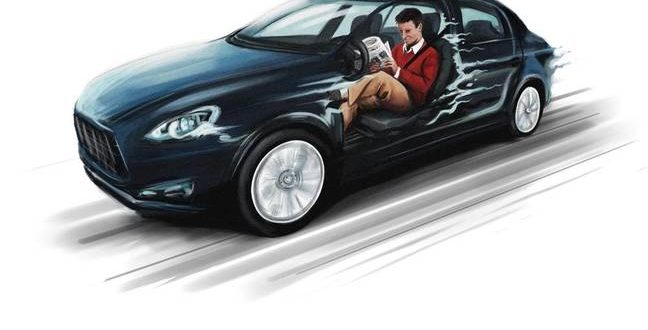Race to robo ride glory continues to heat up
The company is notoriously secretive about potential products, and it hasn’t divulged many details about its plans. Apple has provided a statement to federal regulators saying it had turned its attention to “machine learning and autonomous systems,” a spokesperson told reporters.
Rumors that Apple was interested in autonomous cars began circulating over two years ago. Initially it refused to comment, but there were signs that developers were quietly working to develop self-driving software.
Apple filed for patent number 20160358485 at the US Patent & Trademark Office for computer graphics software called “Collision Avoidance Of Arbitrary Polygonal Obstacles.”
The method describes techniques that “use simple geometry to identify which edges of which obstacles an agent is most likely to collide.” The idea is that if the agent – or car – highlights what objects it might crash into, it calculates the “avoidance force” needed to avoid potential impacts.
Simulation is vital for accelerating testing of self-driving cars. Waymo’s self-driving software has clocked more than a billion miles on simulated roads.
OpenAI recently incorporated the popular open world game Grand Theft Auto onto its machine-learning testbed, Universe, making it easier for developers to kickstart their own self-driving projects.
It’s likely that Apple has also racked up hours of testing data for its own software in a simulated environment.
Its first research paper – and only paper to date – discusses how a general adversarial network, SimGAN, can generate image data that mimics real test data to spawn more data to train its models with.
Current systems require huge swathes of data that need to be labelled carefully. It’s a lucrative business, with many startups stepping up to provide training data as a service. SimGAN is a way to get around this problem as it produces volumes of fake, realistic labelled data that can trick systems into thinking it’s the real deal.
It’s unknown if Apple is looking into using SimGAN to propel its autonomous car efforts, but the paper’s conclusion hints that it could be possible. “In [the] future, we intend to explore modeling the noise distribution to generate more than one refined image for each synthetic image, and investigate refining videos rather than single images,” the paper concluded.
Apple was not available for comment. ®






